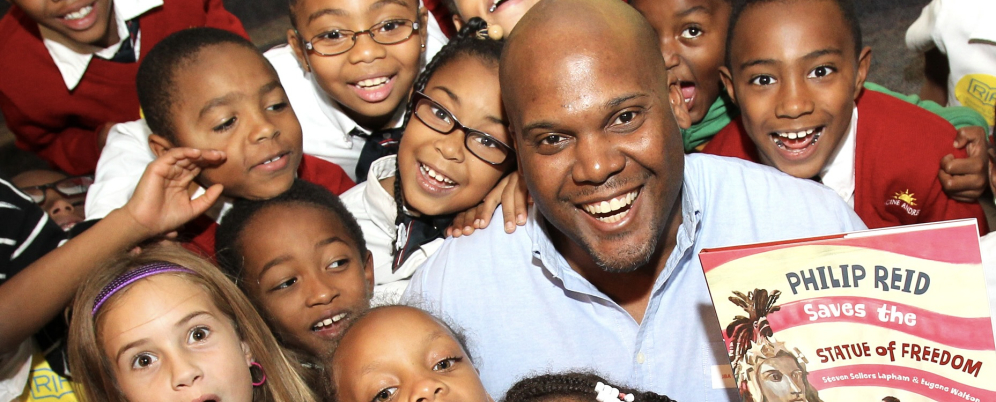Home-to-School Connections for Early Learners

Literacy as a cognitive skill (defined as word reading and language comprehension) has become a primary focus in education today and the development of these skills begins long before students ever step into the school building. These skills begin to develop in a social and cultural environment beginning from birth and starting within a child’s family and continue to be reinforced in the home setting. Whether reading a book or a recipe, searching for something online, or speaking in a home language, children begin developing literacy practices that include both cognitive skills and social relationships at home with their families.
Home-to-school literacy practices benefit both families and educators starting in early childhood. Here are some key strategies for creating and reinforcing these important connections:
Tap into Families’ Funds of Knowledge
Establishing strong family engagement and home-to-school connections begins with a deep belief that all families have rich social and cultural literacy practices. Research on funds of knowledge demonstrates that educators who tap into the cultural and historical knowledge and competencies of households improve relationships with families and enhance their literacy curriculum.
One highly effective method for educators to understand the funds of knowledge of families in their class community is through home visits. These visits should be asset-oriented and focused on the myriads of ways that educators can learn from and with families about different home literacy practices. If home visits are not feasible, educators can also get to know families through virtual home visits, surveys, or by inviting families to visit the class. Then, educators should reflect on their new understandings and integrate them into their upcoming units and lessons.
Reading Is Fundamental (RIF) offers a Funds of Knowledge survey free for educator use here: https://www.RIF.org/literacy-central/material/funds-knowledge-survey
Use Authentic Literature
Read-alouds, or shared book reading, are a common practice in early childhood settings with wide-ranging evidence of positive outcomes including social and emotional learning, vocabulary and comprehension, and long-term academic achievement. However, research from Conradi Smith et al. (2022) indicates that educators often have limited repertoires that lack diversity when selecting texts despite the positive findings on children seeing themselves and their peers represented in classroom literature.
In addition to becoming more versed in current children’s literature through booklists, educators can also invite families to send in books that they read at home or invite family members to come read aloud to the class or a small group of children. Keep in mind that many cultures include rich oral traditions. Part of these traditions is that stories change over time and are dependent on the storyteller. This is not usually the case when stories become translated into books since the text is more static. Include families who want to tell a story to children rather than read a book.
RIF offers a diverse line-up of read-alouds by celebrated authors and accompanying thematic booklists that you can explore at RallytoRead.org. as part of our reading engagement initiative, Rally to Read 100, which runs now through the end of March, National Reading Month.
Support Biliteracy
Research highlights the benefits of biliteracy (the ability to speak and write in more than one language). While approximately 5.3 million children speak a language other than English in their homes, most children attend schools in which English is the primary medium of instruction.
Educators can still support the development of biliteracy in the classroom and at home through providing opportunities for translanguaging and inviting families to read aloud both in and out of school in their native language. Begin the school year by getting to know your children’s home language cultures through a home language survey. Keep in mind that even children who are not officially designated as English Learners may have a heritage language that they practice at home. Then, find bilingual books that you can read aloud in class or invite family members to read aloud in class as well as send home with students. Having your children’s languages represented in your classroom library supports both biliteracy and creates positive self-identity for emerging bilingual children.
RIF offers book recommendations and related resources available in multiple languages through its free online destination Literacy Central including this Spanish Language Collection of titles and reading resources: https://www.RIF.org/literacy-central/collections/spanish-language-collection
Design Culturally Responsive Dramatic Play
Dramatic play, such as children role playing ordering food from a menu at a restaurant or making a grocery list and shopping, has the strongest connection to literacy development. Picture this, through dramatic play children are able to image a setting, play the role of the characters, and develop a plot which directly relates to their development of literature language such as story structure and vocabulary.
Teachers can design culturally relevant dramatic play by first getting to know the community and carefully selecting a theme and props that mirror children’s worlds outside of school. Educators should ask themselves, where do my students go outside of school (e.g., bakeries and restaurants, farmer’s markets, laundromats, salons) and what kinds of environmental print do my students see in their communities? If possible, visit these places or ask families to send in photographs to re-create these places as dramatic play centers in your classroom. Then, listen and observe as children draw from their lived experiences to recreate dialogue and activities from their cultures. You will learn more about your children and their families’ outside-of-school lives. If possible, find books related to the dramatic play center theme to create an even stronger connection to literacy.
RIF recently launched an online destination for Early Childhood Education. This online destination provides teachers and families with the ideas and resources to create storybook-based dramatic play centers in classrooms and in homes to foster the link between literacy and play. https://www.RIF.org/literacy-central/ece
Through these approaches, educators can strengthen home to school ties that are critical to supporting students’ literacy development.

